Prato, clothes and accessories from the Fineschi collection on display at the Textile Museum
From February 13 to May 29, 2022, the Prato Textile Museum is hosting the exhibition Novecento Elegante. Clothes and Accessories from the Fineschi Donation, a selection of more than eighty objects including women’s and men’s clothes and accessories that belonged to the Fineschi family, among the most active of Prato’s entrepreneurial bourgeoisie since the mid-19th century, collected over the past two decades by Ada Tirinnanzi, wife of Antonio Fineschi and holder of the family memory. The entire collection, consisting of more than 160 objects, was generously donated in 2021 to the museum, thus enriching its holdings, increasing the fashion and clothing section with objects ranging from the late 19th century to the 1990s and becoming to all intents and purposes a city heritage.
The exhibition, curated by museum curator Daniela Degl’Innocenti with the collaboration of Valentina Sonnati, is set up in the Museum’s Antique Fabrics Room and presents some 30 dresses and about 50 accessories and clothing complements that are an expression of Italian taste, fashion and social life, a fundamental testimony to the history of the area and the history of Italian costume between the nineteenth and twentieth centuries.
This heritage was born and developed in a domestic rather than a collecting context, the result of Ada Tirinnanzi Fineschi’s passion for the history of costume and her love for her family. Their history spans more than a century and is distinguished by the business activities that bring it to the city’s attention: from the historic pasta factory founded in 1826 to the car sales business of more recent years started by Antonio Fineschi. The study of the collection conducted by the Museum combined with the interesting photographic and video holdings preserved by the Family, have made it possible not only to reconstruct the lives of the many members, but also to trace the history of the clothing, the dating, manufacture and affiliation of the curious objects of daily use that accompany the collection.
“We are very grateful to the Fineschi Family for choosing the Textile Museum as a place to preserve and protect their rich collection,” says Textile Museum Foundation President Francesco Nicola Marini. “Thanks to them, our heritage has been greatly enriched, thus going on to increase the collections of clothing and fashion accessories with extraordinary pieces. I thank Ada Tirinnanzi Fineschi in a special way, who has been able to preserve the family heritage all these years and, above all, has decided not to disperse it, but to make it available to the whole community with her generous gesture.”
“I thank the Museo del Tessuto for accepting this important donation that tells a piece of our city’s history,” says Simone Mangani, councilor for culture of the City of Prato.
The exhibition received support from the Founding Member City of Prato, Estra spa, Fondazione Cassa di Risparmio di Prato, Saperi Srl, the General Directorate for Education, Research and Cultural Institutes of the Ministry of Culture, the Region of Tuscany, and the Museo del Tessuto Supporter Club.
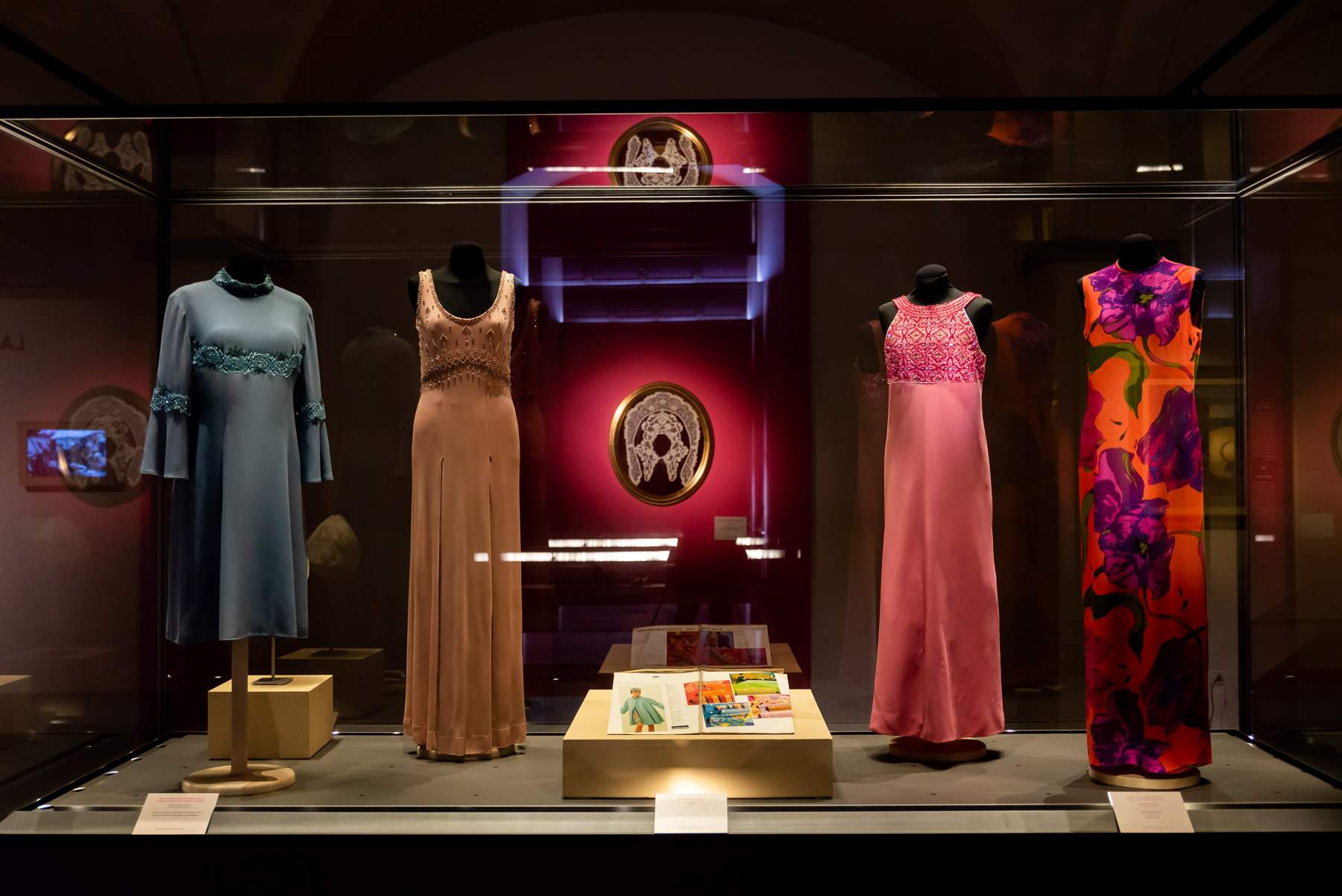
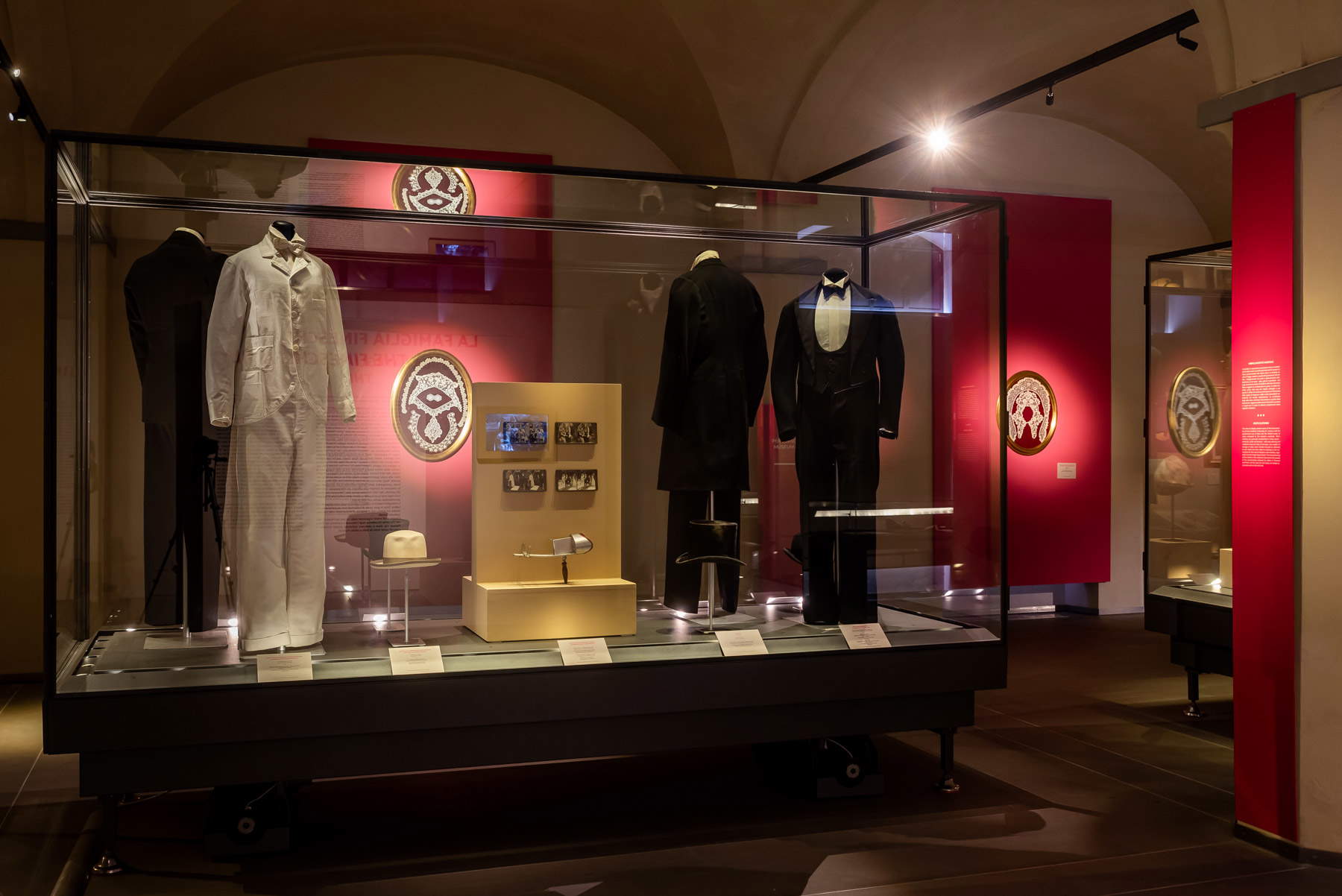
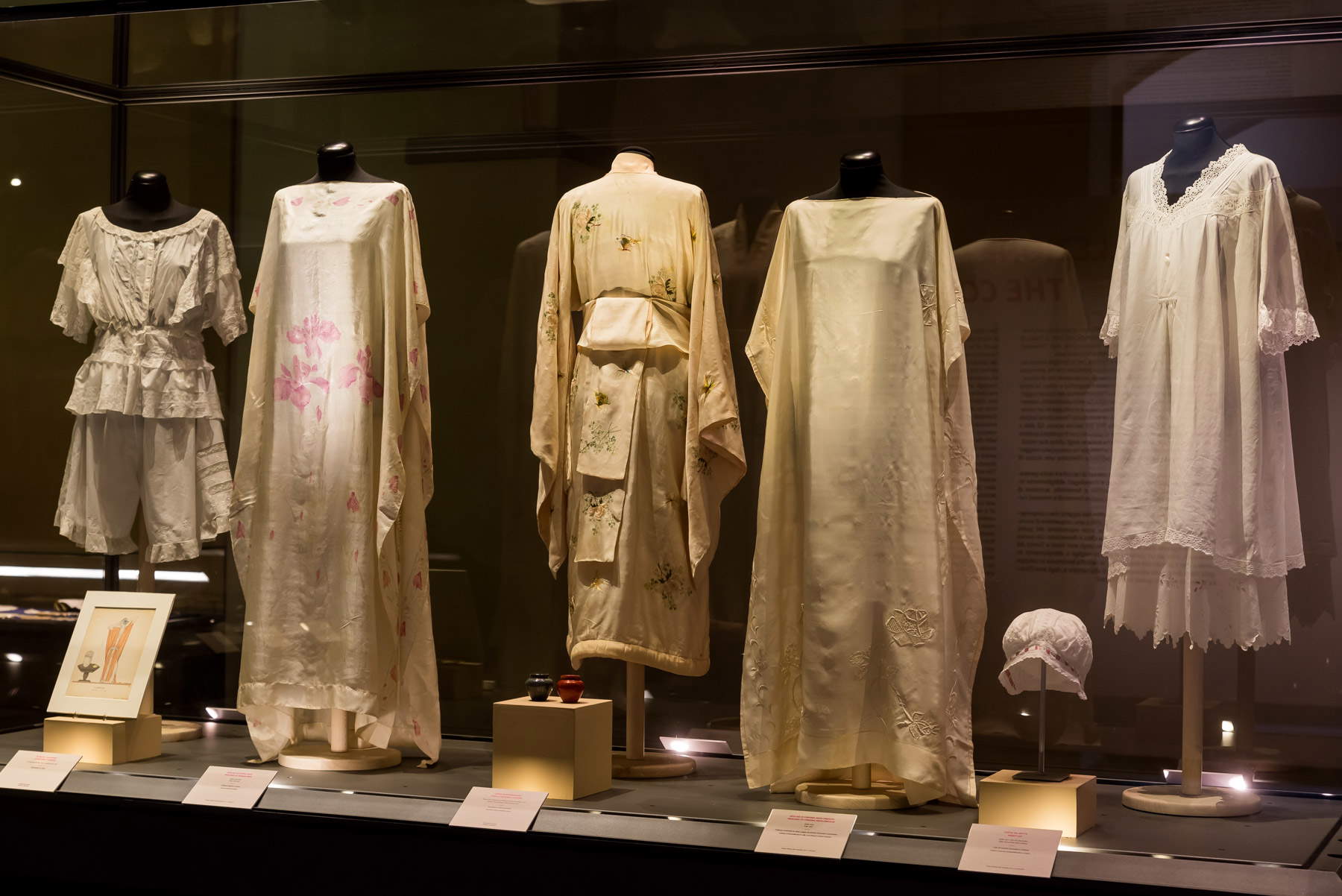
The exhibition route
The exhibition itinerary proceeds by thematic and chronological strands: children’s clothing and toys, men’s and women’s day and evening wear accompanied by luxury accessories, women’s creative activities and cultural interests of family members. Unprecedented is the presentation of some children’s outfits from the 1920s and 1930s, which testifies to the development of fashion dedicated to childhood and is accompanied by a series of board games and toys that contextualize the historical period and the exhibition.
This content is complemented by a display of richly embroidered night gowns and fine négligés decorated by the women of the family. Indeed, the collection includes numerous embroidery works that attest to the passion of the women of the family for this activity: collars and laces in Renaissance stitch, doilies and borders in Chiaccherino, and designs for bobbin lace dating from the first two decades of the 20th century. Of particular note are some women’s designs from the mid-1920s that reflect the attention to French fashion of that period known through fashion magazines featuring the creations of the most celebrated Parisian couturiers.
For men’s fashion, there are day and evening suits from the early 1930s by tailors from Prato and Florence: tailcoats, tuxedos and overcoats accompanied by appropriate accessories such as hats, canes and fine sepiolite smoking sets. For the postwar period, the collection bears witness to the development of the fashion industry through haute couture garments from the 1960s worn for the exclusive recreational and cultural events of Prato’s historic Misoduli Society up to the outfits of the first great Italian brands of the 1980s such as Gianfranco Ferré and Rocco Barocco. Objects such as buttons, buckles, bijou, and handbags embellish the exhibition path connoting the refined quality of the preserved outfits and those no longer in the collection.
The quality of the fabrics and the manufacture of the clothes follow the references to the fashion trends of the period, as evidenced by the magazines, planche, figurines, trend and sample books, belonging to other collections of the Museum, which enrich the exhibition to create a dialogue between this heterogeneous variety of materials. In continuity with the previous exhibition, we return to Galileo Chini with two paintings from 1934 that testify to the artist’s family relationship with the Fineschi family. The exhibition is completed by a film, specially made by the Museum for the occasion, which combines photographs from family albums and original footage. The video helps to contextualize the objects and make the collection an authentic testimony to the many fascinating micro-stories that run through the life of this family and also that of social customs and Italian fashion of the last century.
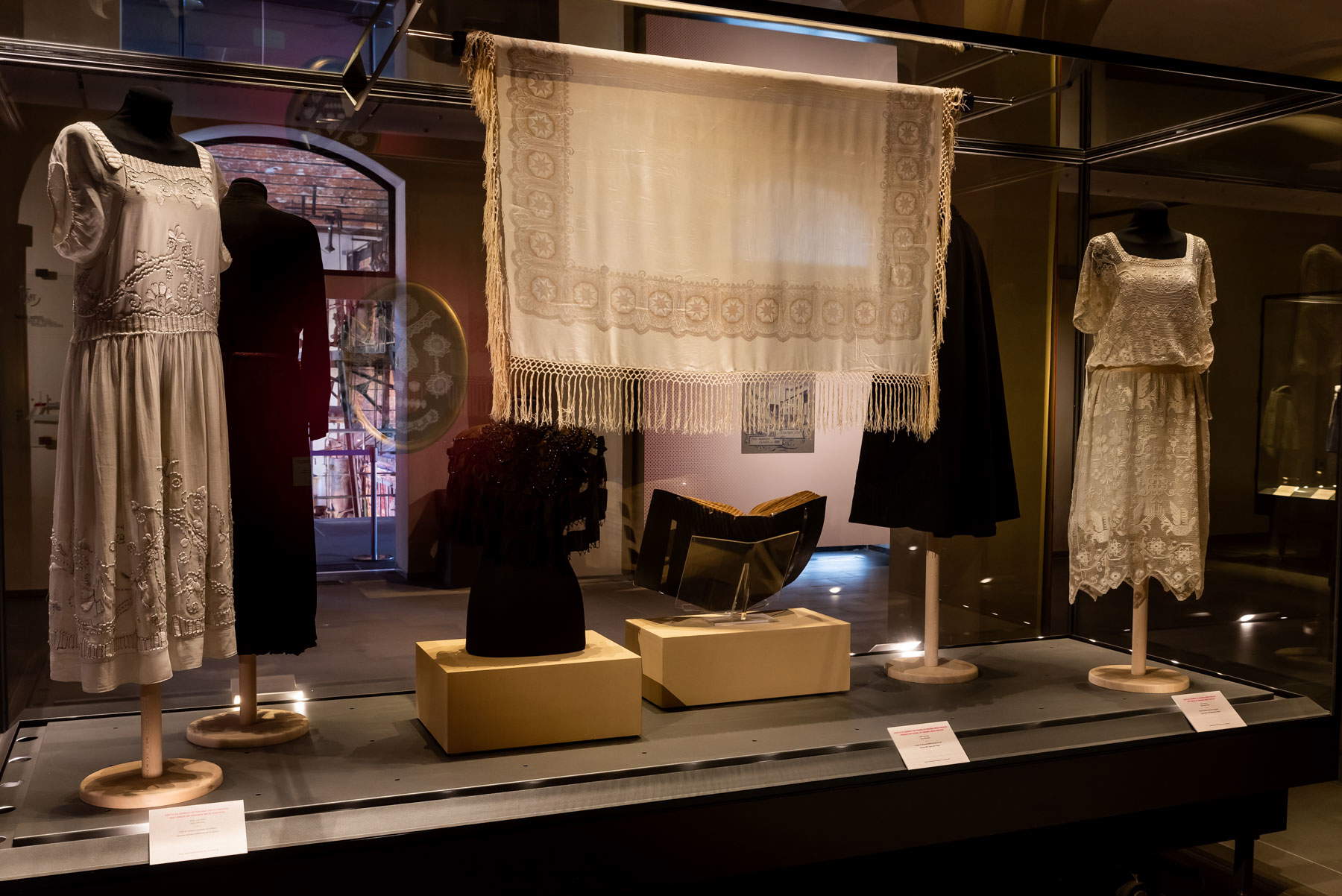
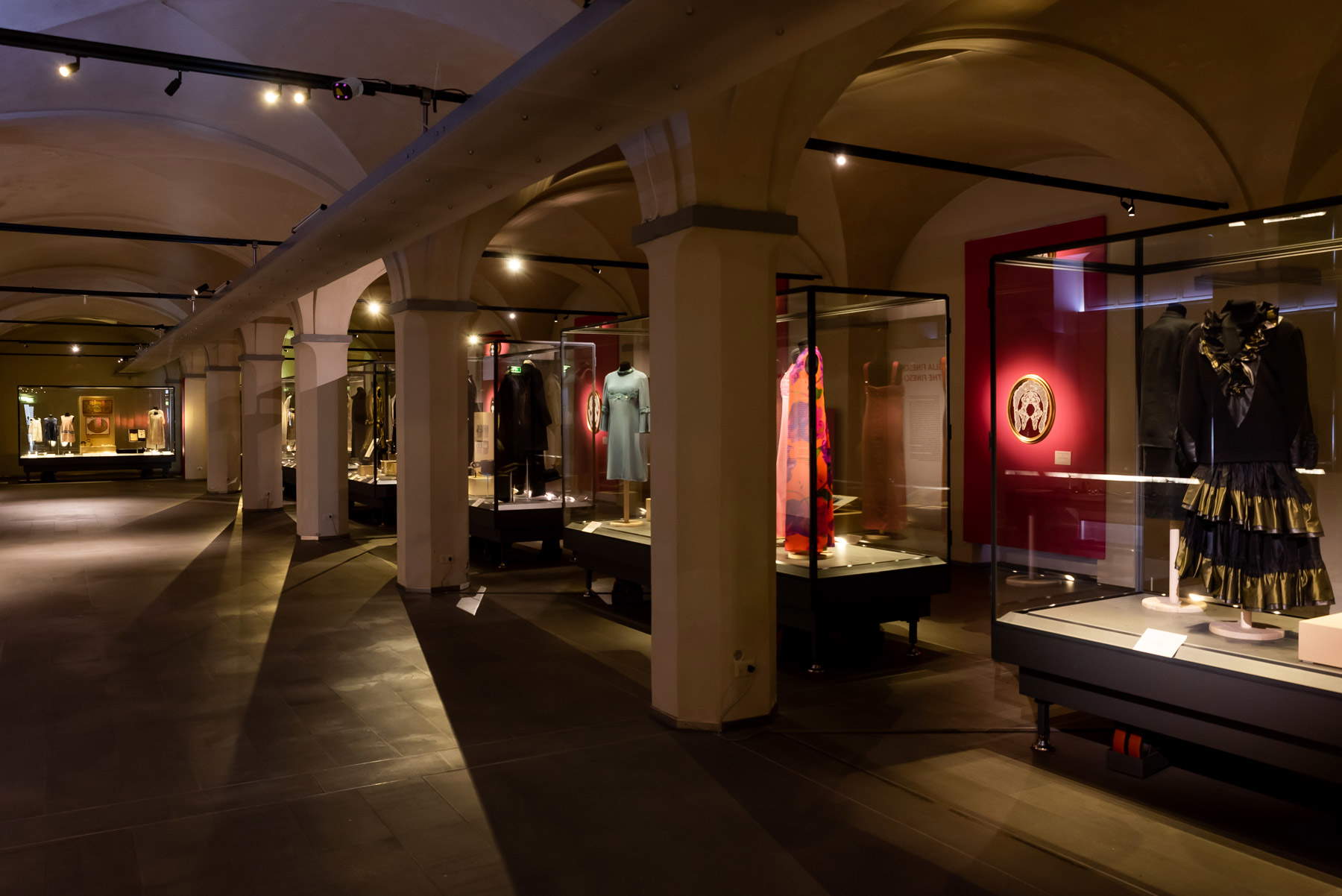
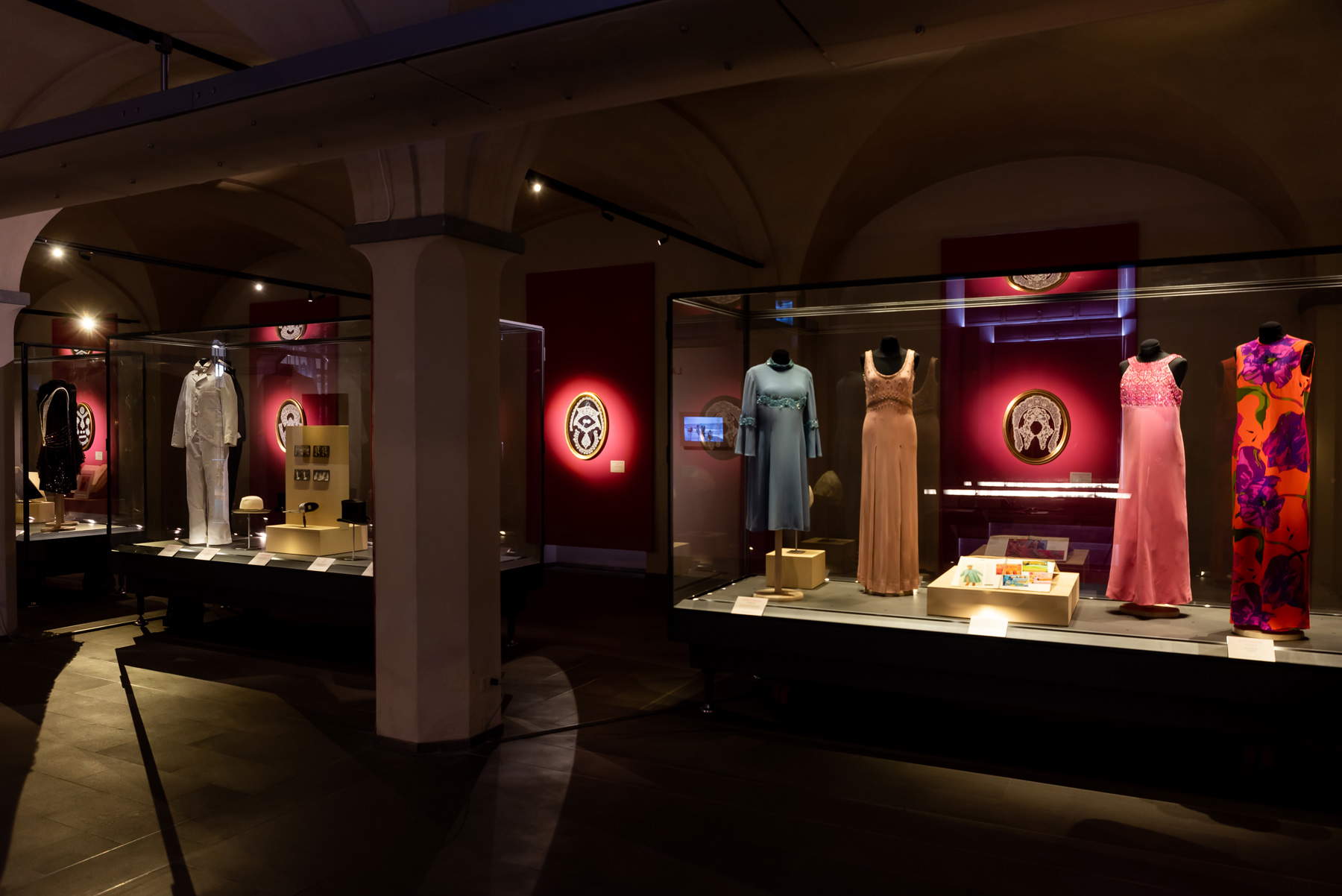
 |
| Prato, clothes and accessories from the Fineschi collection on display at the Textile Museum |
Warning: the translation into English of the original Italian article was created using automatic tools. We undertake to review all articles, but we do not guarantee the total absence of inaccuracies in the translation due to the program. You can find the original by clicking on the ITA button. If you find any mistake,please contact us.



























